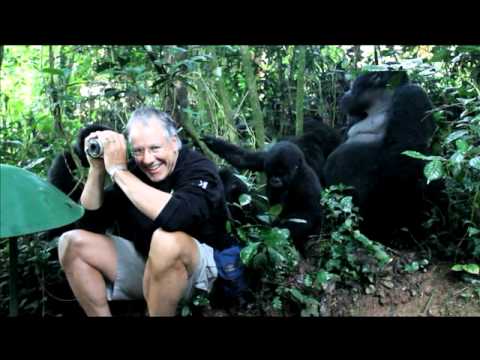Tourists should take only pictures and leave only footprints, scientists say. For the mountain gorilla, however, something else is being left behind; deadly diseases.
Ecotourists are ignoring the rules and straying too close to the endangered primates, transmitting human infections, a study of trip photos on Instagram reveals.
Searching the social media site, UK researchers found nearly 643 images showing people getting closer than 23 feet to the gorillas — and even touching them.
This proximity allows for the transfer of coughs, colds and respiratory infections which, if left untreated, have potential to kill gorillas.
Incidents of infections are on the rise in the gorilla populations, with a recent outbreak of human metapneumovirus in Rwanda infecting 11 apes, leaving two dead.
Mountain gorillas inhabit forests in Uganda, the Democratic Republic of the Congo (DRC) and Rwanda. They are endangered, numbering at around only 1,000.
Tourists excursions to see the primates are permitted in all three countries — with the caveat that people are supposed to stay 23 feet (7 metres) from the gorillas.
Additionally, visitors in the DRC are supposed to wear face masks on the trips, a rule that Uganda is also set to soon begin enforcing.
To see if the rules were being followed, primate conservationist Gaspard van Hamme and colleagues at of Oxford Brookes University reviewed Instagram photos of people on gorilla treks that had been posted after 2013.
In each possible case, the team estimated the distance between the tourists and the gorillas they had come to see.
The researchers found that of 643 such images, people had come within less than 23 feet of the gorillas — in violation of the regulations.
Furthermore, 20 images showed people going further, touching the wild animals, while only two-thirds of tourists pictured in the DRC wore the required face masks.
The team noted that close encounters often appear to be initiated by young gorillas.
‘Juvenile primates tend to be more inquisitive,’ explained Mr van Hamme.
He added that the study findings don’t necessarily show that the rules are always being broken, as people could be preferentially posting images where the animals are up close.
‘The goal was not to say that it happens in this proportion of the total – but that it does happen very often,’ Mr van Hamme told the New Scientist.
Similarly, tourists in the DRC could be wearing the mandated masks during most of their excursions, taking them off only for their photographs.
‘But that still presents a risk,’ Mr van Hamme cautioned.
‘Social media is making the problem worse, for sure,’ Gladys Kalema-Zikusoka at the Ugandan charity Conservation Through Public Health told the New Scientist, noting that visitors want to have the same up-close experiences they see online.
Tourism needs to continue, however, she added, noting that such helps fund conservation programmes while encouraging locals to protect the primates.
‘Otherwise, if a gorilla comes into their garden they would kill it.’
‘But the gorillas might be the reason their child has a job.’
Instead, veterinarian Fabian Leendertz of Berlin’s Robert Koch Institute argued to the New Scientist, responsibility must fall to tour operators to better enforce the rules.
‘There’s big variability among the guides,’ he said.
‘People are more likely to give a guide a tip if they get a good selfie.’
The researchers believe that, if the rationale for the rules were better explained, people who care about gorillas would be wiling to keep their distance and wear masks.
‘I don’t think the experience would be less enjoyable,’ said van Hamme.
‘But the pictures may get less likes on Instagram.’






